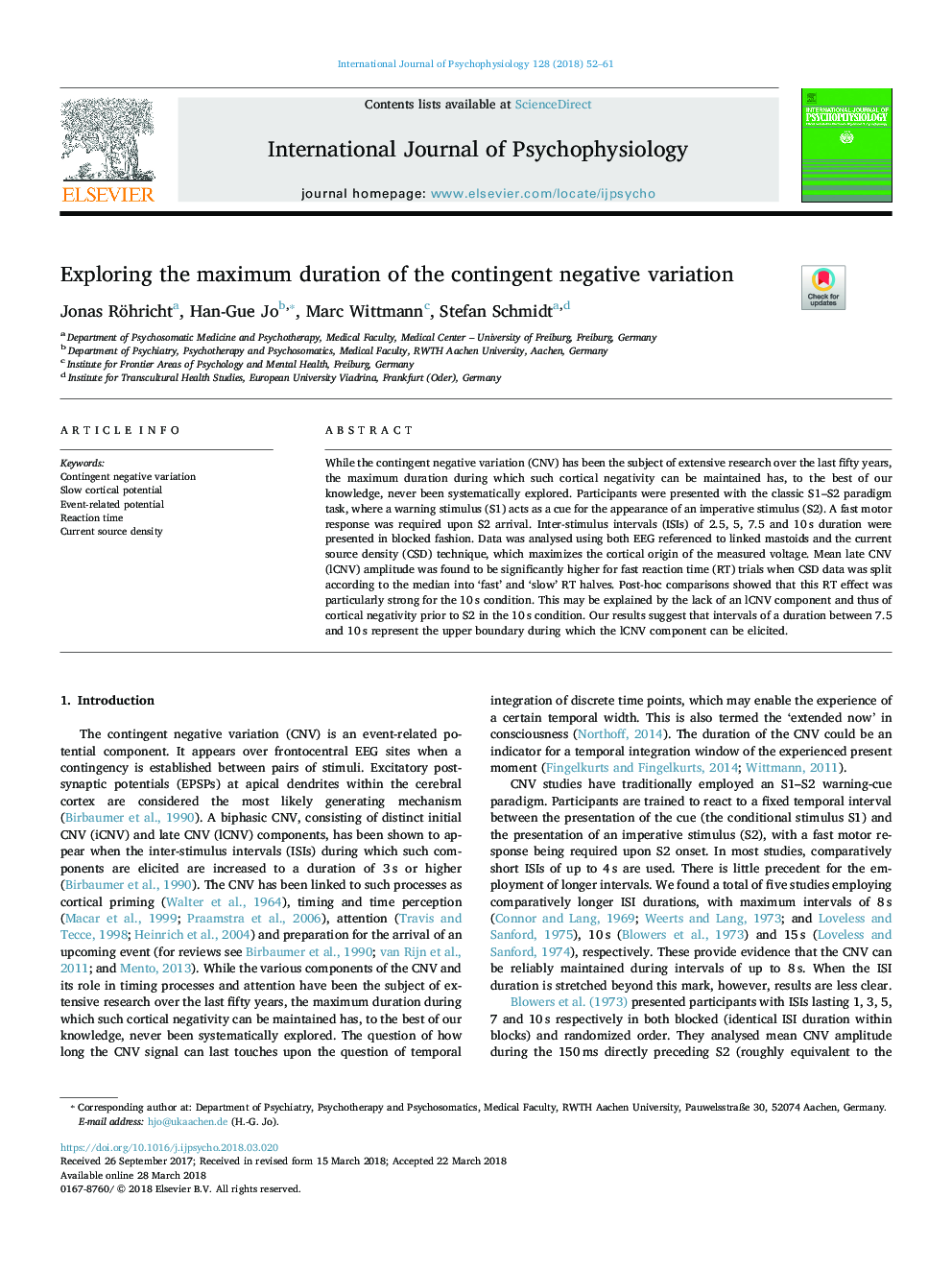| Article ID | Journal | Published Year | Pages | File Type |
|---|---|---|---|---|
| 7294814 | International Journal of Psychophysiology | 2018 | 10 Pages |
Abstract
While the contingent negative variation (CNV) has been the subject of extensive research over the last fifty years, the maximum duration during which such cortical negativity can be maintained has, to the best of our knowledge, never been systematically explored. Participants were presented with the classic S1-S2 paradigm task, where a warning stimulus (S1) acts as a cue for the appearance of an imperative stimulus (S2). A fast motor response was required upon S2 arrival. Inter-stimulus intervals (ISIs) of 2.5, 5, 7.5 and 10â¯s duration were presented in blocked fashion. Data was analysed using both EEG referenced to linked mastoids and the current source density (CSD) technique, which maximizes the cortical origin of the measured voltage. Mean late CNV (lCNV) amplitude was found to be significantly higher for fast reaction time (RT) trials when CSD data was split according to the median into 'fast' and 'slow' RT halves. Post-hoc comparisons showed that this RT effect was particularly strong for the 10â¯s condition. This may be explained by the lack of an lCNV component and thus of cortical negativity prior to S2 in the 10â¯s condition. Our results suggest that intervals of a duration between 7.5 and 10â¯s represent the upper boundary during which the lCNV component can be elicited.
Keywords
Related Topics
Life Sciences
Neuroscience
Behavioral Neuroscience
Authors
Jonas Röhricht, Han-Gue Jo, Marc Wittmann, Stefan Schmidt,
